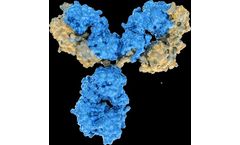Oncogene Articles & Analysis
31 articles found
By studying how these cells respond to oncogenic signals, scientists have been able to identify potential therapeutic targets. ...
The process of immortalization typically involves the introduction of specific oncogenes or the use of viral vectors to enhance the longevity of the cells. ...
Enzyme Induction: Some glucosinolate degradation products, like radish sulfur (4-methylthiooxybutyl glucosinolate), are powerful inducers of detoxifying enzymes that can inactivate oncogenes. The bioavailability and activity of glucosinolates in humans depend on factors such as food preparation methods, gut microbiota composition, and individual metabolic responses. ...
Discover how matched tumor-normal sequencing can help clinical researchers detect the somatic origin of variants with certainty. In the era of precision oncology, it has become increasingly common for patients diagnosed with cancer to undergo tumor sequencing. Identifying the mutations that make up a tumor’s genomic landscape can help guide selection of targeted therapies and inform ...
In response to the emerging needs in global healthcare, SOPHiA GENETICS has just revealed the New Generation SOPHiA DDM™ Platform, aiming to stay at the forefront of precision medicine and address today the healthcare needs of tomorrow. ...
Furthermore, our Gene Overexpression Cell Line Construction Service is not limited to a specific gene or cell type. Whether you are studying oncogenes, tumor suppressor genes, transcription factors, or any other gene of interest, we can assist you in creating stable cell lines with precise control over gene expression levels. ...
Evidence that NF-κB can transform cells originally came from the discovery of the v-Rel gene from an avian retrovirus, which encodes a protein that is highly oncogenic and can cause malignant cancers in chickens. Later studies revealed that the protein encoded by v-Rel belongs to the Rel subfamily of NF-κB, and several other oncogenic viruses that ...
The Myc gene is one of the most important drivers of cancer in mice and humans. Myc also plays a newly discovered key role in aging, according to a new study in Cell Reports by researchers at UPMC Children's Hospital of Pittsburgh and the University of Pittsburgh School of Medicine. The study, led by Edward V. Prochownik, MD, UPMC Children's Hematology/Oncology Division and Paul C. Gaffney ...
This approach is highly effective in identifying retroviral integration sites, thus strengthening our understanding of many oncogenic viruses. Additionally, the technique plays a crucial role in investigating unknown DNA segments' origins and studying transposons' mobility, gene modifications, and bacterial adaptability. ...
For instance, rcDNA may carry the HIV virus or the Ras oncogene. The insertion of LINE-1 sequences, found in mammalian cell genomes, into chromosomes as retrotransposons can impact the functionality of essential genes, potentially activating oncogenes or inhibiting tumor suppressor genes. ...
Recently, in a research report entitled "Oncogenic CDK13 mutations impede nuclear RNA surveillance" published in Science, scientists from Howard Hughes Medical Institute and other institutions discovered a new type of mechanism that affects the occurrence of melanoma, providing broad and important implications for the treatment of various cancer patients. ...
Subsequently, multiple types of ALK gene rearrangements were identified in NSCLC, diffuse large B-cell lymphoma, and inflammatory myofibroblastic tumor (IMT) respectively, proving ALK to be a potent oncogenic driver. Researchers developed a retroviral cDNA expression library to screen for novel oncogenes. ...
The proliferation of pancreatic ductal adenocarcinoma (PDAC, the most common pathological type in pancreatic cancer) with mutations in the oncogene Kras is highly dependent on the glutamine (Gln) catabolic pathway. ...
Among the six possible mechanisms leading to oncogenes with an altered expression that cause cancer, three of them are directly related to DNA methylation and histone acetylation. ...
At present, a large number of scientific studies have focused on how oncogenic mutations regulate the activity of proto-oncogene protein products themselves. ...
With the increasing abundance and diversity of identified oncogenic and tumor suppressor lncRNAs, it suggests that they can serve as potential drug targets and biomarkers in cancer research. ...
Abstract The oncogene Ras and the tumor suppressor gene p53 are frequently co-mutated in human cancer and mutations in Ras and p53 can cooperate to generate a more malignant cell state. ...
This phenotype is mainly due to the upregulation of lipogenesis-related genes at multiple levels of transcriptional, translational and post-translational modifications, and enzymatic activity, as well as the impact on oncogene expression due to changes in these genes or lipid metabolism. ...
Collectively, the results of this study are the first to demonstrate the high expression and oncogenic role of PTGDS in DLBCL and the efficacy of AT56 in the treatment of DLBCL. ...
Therefore, understanding the precise molecular mechanisms underlying the regulation of MCL1 oncogenic activity is important for finding effective antitumor therapeutics and improving chemosensitivity. ...











